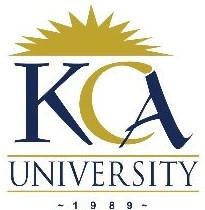 UNIVERSITY EXAMINATIONS: 2010/2011
UNIVERSITY EXAMINATIONS: 2010/2011
THIRD YEAR STAGE EXAMINATION FOR THE DEGREE OF BACHELOR
OF SCIENCE IN INFORMATION TECHNOLOGY
BIT 3103: FOUNDATION LEARNING AND ADAPTIVE SYSTEMS
DATE: AUGUST 2011 TIME: 2 HOURS
INSTRUCTIONS: Answer question ONE and any other TWO questions
Question One
a)Define the term ‘information gain’ and explain its significance in decision trees learning (3 Marks)
b) State and explain two methods that can be used to avoid over fitting in decision trees. (4 Marks)
c)Briefly explain case based reasoning cycle. Draw a well labeled diagram illustrating the cycle
(5 Marks)
d) Consider the following decision tree.

i) rewrite the above tree into four rules (4 Marks)
ii) Use the above decision tree to classify the following new instances into yes/no classes.
(2 Marks)

e)Briefly explain the meaning of the term ‘Occam’s razor principle’. Give one limitation (3 Marks)
f) Describe any three applications of learning and adaptive systems (3 Marks)
g) Explain the meaning of the term ‘machine learning’ as used in artificial intelligence (2 Marks)
h) State and explain two categories of neural network architectures.Give one example for each
(4 Marks)
Question Two
a) Briefly explain the meaning of the following concepts
i) ‘Entropy’ as used in decision trees (2 Marks)
ii) Reinforcement learning (2 Marks)
iii) ‘perceptron’ as used in neural networks (2 Marks)
b) State and explain four parts of a learning system. Use a diagram to illustrate your answers
(6 Marks)
c) Briefly explain any the following Machine Learning paradigms (4 Marks)
i) Neural networks
iii) Unsupervised learning
d) Briefly explain two conditions for stopping computing centroids in k- means algorithm (2 Marks)
e) Briefly two components of artificial neural network. (2 Marks)
Question Three
a) State and explain three learning rules that are used to used to specify how to adjust weights in neural
networks (6 Marks)
b) Describe three benefits of reinforcement learning (3 Marks)
c) Describe k-nearest neighbour algorithm. Give one example to illustrate your answers
(4 Marks)
d) Reinforcement schedules may be used to decrease the probability that a response pattern in a subject
will extinguish. Explain using examples any four reinforcement schedules. (4 Marks)
e) Describe any three applications of reinforcement learning (3 Marks)
Question Four
a)Briefly explain the meaning of the following terms.
i).’Fitness score’ with regard to genetic algorithms (2 Marks)
ii) Concept-Learning (2 Marks)
b) Describe the steps followed by genetic algorithm in machine learning (5 Marks)
c)After an initial population is randomly generated, the algorithm evolves the through three operators.
State and explain each of these operators. Give one example for each case (6 Marks)
d) Explain the meaning of the term ‘hamming distance’ (2 Marks)
e) Consider the following table.

Use hamming distance to determine the difference between an apple and mangoes (3 Marks)
Question five
a)Briefly explain the following terms.
i) City block distance (2 Marks).
iii) Training examples (2 Marks)
b) Briefly explain any four possible criteria for evaluating a learning algorithm (4 Marks)
c)Describe the term ‘rote learning’. Explain two methods of dealing with noise in rote learning.
(3 Marks)
d) Describe three limitations of rote learning (3 Marks)
e)Briefly explain four situations when Machine learning systems can be applied. (4 Marks)
f) Describe any two disciplines contributes to machine learning (2 Marks)